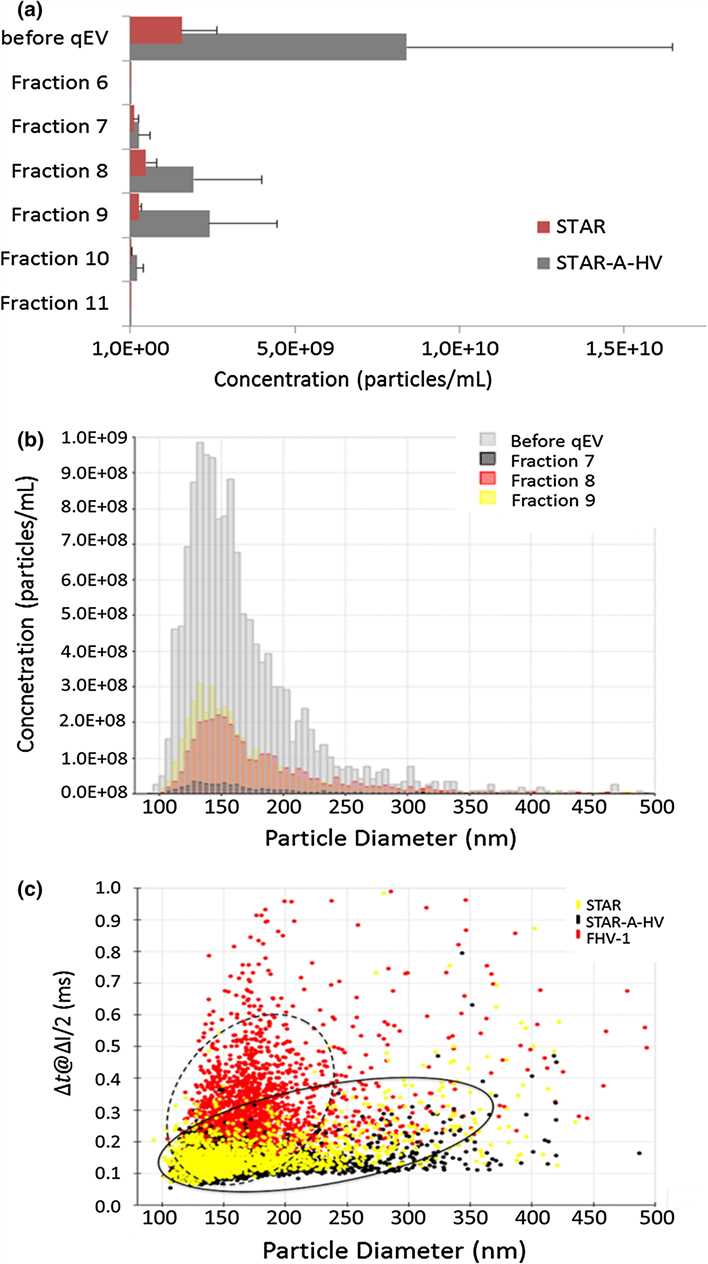Tunable Resistive Pulse Sensing (TRPS) based Exosome Characterization Service
Overview Services Features FAQs
Overview
Creative Biolabs has extensive experience to offer a variety of exosome services, including isolation, purification and characterization. In order to better understand the characteristics of exosomes and facilitate the later therapeutic and diagnostic application, we provide the detail size distribution and concentration measurement of exosomes based on the highly sensitive tunable resistive pulse sensing (TRPS) technology.
TRPS for Exosome Characterization
It is very essential to measure size distribution and concentration of exosomes when investigating their cellular function and uptake. Recently, the TRPS technology usually applied for a particle size distribution and concentration measurement has seen increased use for the characterization of exosome samples. TRPS is the most powerful nanoparticle characterization system available that allows high-throughput single particle measurements as colloids and/or biomolecular analytes driven through a size-tunable nanoscale pore, one at a time.
The technique adapts the principle of resistive pulse-sensing, which monitors current flow through an aperture, combined with the use of tunable nanoscale pore technology, allowing the passage of ionic current and particles to be regulated by adjusting the pore size. Particles crossing a pore are detected one at a time as a transient change in the ionic current flow, which is denoted as a blockade event with its amplitude denoted as the blockade magnitude. As blockade magnitude is proportional to particle size, accurate particle sizing can be achieved after calibration with a known standard. The main particle parameters of TRPS measurement is following:
-
Particle size and accurate number based size distribution, derived on a real particle by particle basis;
-
Particle concentration, being the number of particles/ml for a specified size range;
-
Particle charge and number based charge distribution, also derived on a real particle by particle basis.
Services
TRPS is an essential tool that is used to measure particle size and concentration, particularly in fields like exosome characterization. Unfortunately, TRPS measurements are susceptible to issues surrounding system stability, where the pore can become blocked by particles, and sensitivity issues, where particles are too small to be detected against the background noise of the system.
With the years of experience in exosome characterization and real-time update of technical date, Creative Biolabs improves the TRPS system sensitivity and stability by the optimization of system parameters and provides a comprehensive analysis of the parameters involved in exosome measurements such as size and concentration. We believe that our TRPS-based exosome characterization will help you better understand their physical characteristics, as well as their diagnostic application as potential sources of disease-related biomarkers.
 Fig.1 TRPS concentration/size/charge.1,2
Fig.1 TRPS concentration/size/charge.1,2
Features
-
TRPS system with sensitivity and stability
-
Comprehensive analysis of exosome characterization
-
Rich experience professionals' team
-
Whole-process technical trace service and direction
If you have any demands in exosome characterization, please don't hesitate to contact us for more information.
FAQs
Q: How much sample is needed for this service?
A: For TRPS analysis, it is generally recommended to provide at least 100 microliters of sample, with an exosome concentration of ≥10^10 particles/mL. Additionally, customers are required to provide at least five samples to meet the machine startup requirements.
Q: What are the advantages of TRPS over NTA in exosome identification?
A: TRPS technology offers single-particle analysis, enabling precise measurement of the size and quantity of exosomes. Compared to traditional NTA, TRPS provides higher resolution and accuracy. However, TRPS is more expensive than NTA.
Reference
-
Heider, S.; et al. Integrated method for purification and single-particle characterization of lentiviral vector systems by size exclusion chromatography and tunable resistive pulse sensing. Molecular Biotechnology. 2017, 59(7):251-259.
For Research Use Only. Cannot be used by patients.
Related Services:

 Fig.1 TRPS concentration/size/charge.1,2
Fig.1 TRPS concentration/size/charge.1,2









